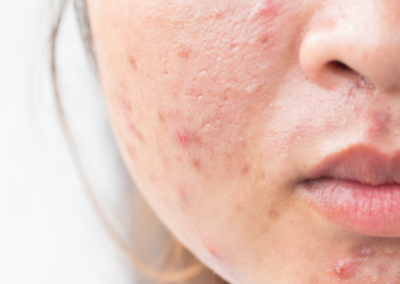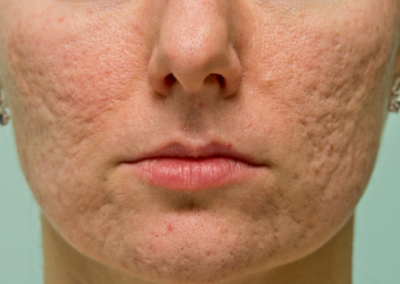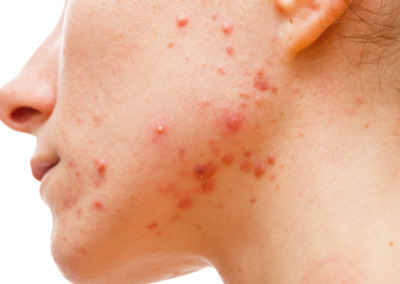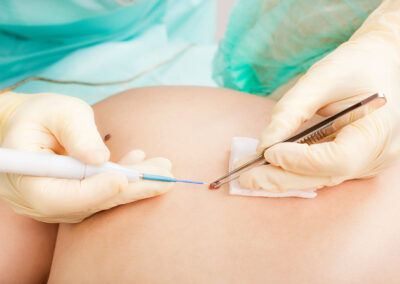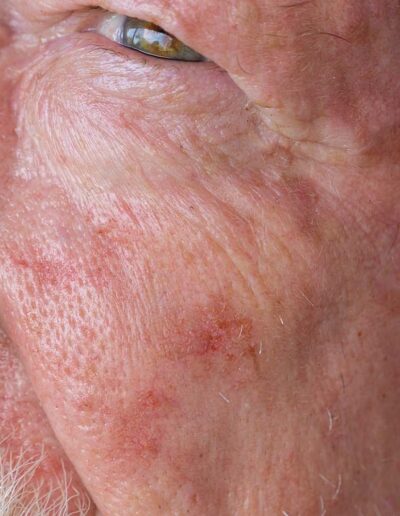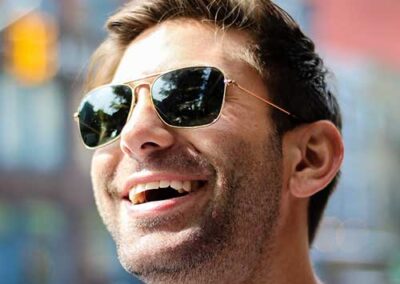Skin Conditions
Edmonton Dermatology treats a variety of dermatologic skin conditions and provides specialized treatment procedures. Below is a partial list of common conditions. We require a referral from your family physician or other specialist.
Other suggested therapies.
- 5 minutes to 1 hour (time is variable depending on the area treated)
- Silk Peel HQ
- MicroNeedling – Intensif Pro
- Chemical Peels
- Cosmetic Dermatology
- Accutane / Epuris
- Vivier Acne
- Vivier Skin TX
- Celazome Acne
- SkinCeuticals
Acne
Acne is the most common skin disorder. While prevalent among teens, it can also affect adults. It is caused when the hair follicles become plugged by the skin’s oils, dirt and dead skin cells. Edmonton Dermatology can provide effective skin care and treatment solutions for various presentations of acne.
Acne Scarring Treatments
Laser Scar Treatment
This is a great option to reduce the appearance of unwanted scars. This treatment is fast, easy and provides remarkable results.
How Does It Work?
Pulses of laser light are gently delivered to the treatment area to break down the scar tissue and help generate healthy new skin.
What Can I Expect?
You can expect to see an overall improvement in the tone and texture of the scar. A series of treatments may be required for desired results. Treatment plans can be adjusted to fit everyone’s lifestyle. peak to your provider regarding desired downtime, comfort, and results.*
*Individual results and patient experience may vary.
Hydrafacial
The HydraFacial is a powerful, non-invasive skin resurfacing treatment that combines cleansing, exfoliation, extraction, and antioxidant protection. Its 3-in-1 patented treatment leaves the skin hydrated, cleaned, and soft.
There is an option to add a personalized booster serum of your choice accompanied with LED lights treatment to further improvements to your skin’s health.
What can I expect during treatment?
During treatment, the patient will be sitting comfortably upright in a chair. The light will be placed over the treatment area and treatment will begin.
What can I expect after treatment?
After the treatment area is treated, it may be slightly pink as the light is warm. This side-effect will subside in a few minutes, up to 1 hour post. As the skin can be sensitive to the sun after the treatment, it’s recommended to use an SPF of 30 or higher immediately post treatment and for a few days after.
Sunscreen tips.
Ensure your sunscreen has a minimum protection rating of 30 SPF and UVA/UVB and/or Broad Spectrum on the label. For best results, re-apply every 2 hours.
Rosacea
Rosacea is a condition of persistent redness of the cheeks, nose, chin, forehead and eyes. It may appear as flushing redness at first, and become chronic over time.
Symptoms vary. In some people it can lead to bumps, pimples, enlarged blood vessels and red eyes. Depending on the type of rosacea you have, treatment options include medical treatment, skincare and/or laser therapy.
Depending on the type of rosacea you have, treatment options include medical treatment, skincare and/or laser therapy.
Moles (Benign Nevus)
Most nevi or moles appear on the skin at a young age and are usually harmless (meaning non-cancerous). Benign nevi or moles are uniform in colour, such as black, brown, skin-colored; they are symmetric; either raised or flat. A nevus becomes concerning when one of these features change. To know if your mole is changing follow these simple guidelines: ABCDE
Cosmetic Mole Removal.
For those individuals who are concerned with the cosmetic appearance of a mole, Edmonton Dermatology can provide safe, effective treatment for removal. The removal is based on the type, appearance and location of the mole. Therefore our office requires a referral from a family physician for an appointment to see our dermatologist.
Treatment.
Removal of a mole is dependent on the type of mole. Your dermatologist will choose the most appropriate way that will provide the best results aesthetically and to reduce the chance of recurrence. Removal is completed by either a shave excision, a punch excision, or surgical excision.
Sunscreen tips.
Choose a sunscreen with minimum SPF 30 with broad-spectrum UVA & UVB protection. Look at the ingredients when shopping for sunscreen- we recommend physical sunscreens that contain zinc oxide and/or titanium dioxide
Hyperhidrosis/ Excessive Sweating
Hyperhidrosis is a condition of overactive sweat glands. Sweat glands produce a salty solution called sweat which functions to regulate our body temperature. Sweat glands are located in the underarms, palms of hands, bottoms of feet and the forehead. In hyperhidrosis, the sweating occurs because of excessive body temperature regulation. Patients who have this condition can sweat excessively without doing any physical activity. Simply sitting on the couch can trigger excessive sweating.
Prescriptions.
There are several prescription options for topical relief for hyperhidrosis. Please make an appointment with your physician or Dr. Muba Taher to determine the safest, most effective treatment option for your individual needs. Only a Medical Physician can determine what course of action is right for you for treatment of hyperhidrosis.
Botox Injections
In some cases, focal injections of botulinum toxin A (Botox Therapeutic™) can serve to block the nerves from receiving signals that stimulate the sweat glands. Botox Therapeutic™ is approved for treating excessive sweating of the underarms and serves to prevent the release of a chemical that signals the sweat glands to activate. *This is a non-permanent treatment and injections are repeated at intervals to maintain results. Treatments are most effective for the underarms, palms of hands and foreheads.
Actinic Keratosis or Precancerous Lesions
One of the most common skin conditions that we see at our clinic is “Actinic keratosis”. This refers to pale to reddish scaly bumps that can be seen especially on sun-exposed areas of the face, chest, arms, and legs. Sometimes it is hard to even see these spots and they are better felt as rough gritty bumps on the skin.
Such spots are more common in patients with lighter skin color, and those with a history of a lot of sun exposure.
Why treat Actinic Keratosis?
One visual reason is to make the skin look smoother and to get rid of these crusty spots which can be unsightly. More importantly however, these are treated because some of these may turn into skin cancer. Some, but not all of such spots can continue to get thicker and larger, and turn into a skin cancer we call “Squamous cell carcinoma.” You should be especially concerned about this progression into skin cancer if these spots of actinic keratosis start to grow quickly into thicker bumps, and if they bleed or hurt. Since we do not know for sure which spots of actinic keratosis will turn into cancer, we suggest steps be taken to prevent them in the first place, and to aggressively treat new spots of Actinic keratosis as they arise.
How are actinic keratoses prevented?
The main strategy is to minimize sun exposure. This includes using sunscreens, wearing protective clothing and hats, and to be careful of what times in the day you spend in the extreme glow of the hot sun.
How are actinic keratoses treated?
There are many ways to treat these and your doctor will suggest options depending on how extensive your spots are.
Some examples include applying certain topical creams, using liquid nitrogen cryotherapy, chemical peels, and photodynamic therapy.
Sunscreen tips.
Choose a sunscreen with minimum SPF 30 with broad-spectrum UVA & UVB protection. Look at the ingredients when shopping for sunscreen- we recommend physical sunscreens that contain zinc oxide and/or titanium dioxide
Solar Lentigos or Sun Freckles
Solar Lentigos are caused by long-term sun exposure and appear a s light brown or brown patches on the skin. Usually harmless, solar lentigos can enlarge and darken over time with continued sun exposure. Aesthetic treatments including skincare and laser therapy are available to help remove and protect from additional Solar Lentigos from appearing.
Photofacial Skin Revitalization
This is a non-surgical treatment that will improve your skin’s appearance, quickly and easily. This advanced light-based technology assists in eliminating undesirable brown spots, sun damage and vessels, revealing clearer, healthy skin.
How does it work?
Specialized pulses target brown spots, sun damage and vessels without harming the surrounding skin. The light delivered to your skin causes them to slowly disappear through your body’s natural healing process.
Expected results.
Expect to see a decrease in the appearance of brown spots, sun damage and vessels for a more even skin tone*. A series of treatments may be needed for desired results. Treatment plans can be adjusted to fit everyone’s lifestyle.*
